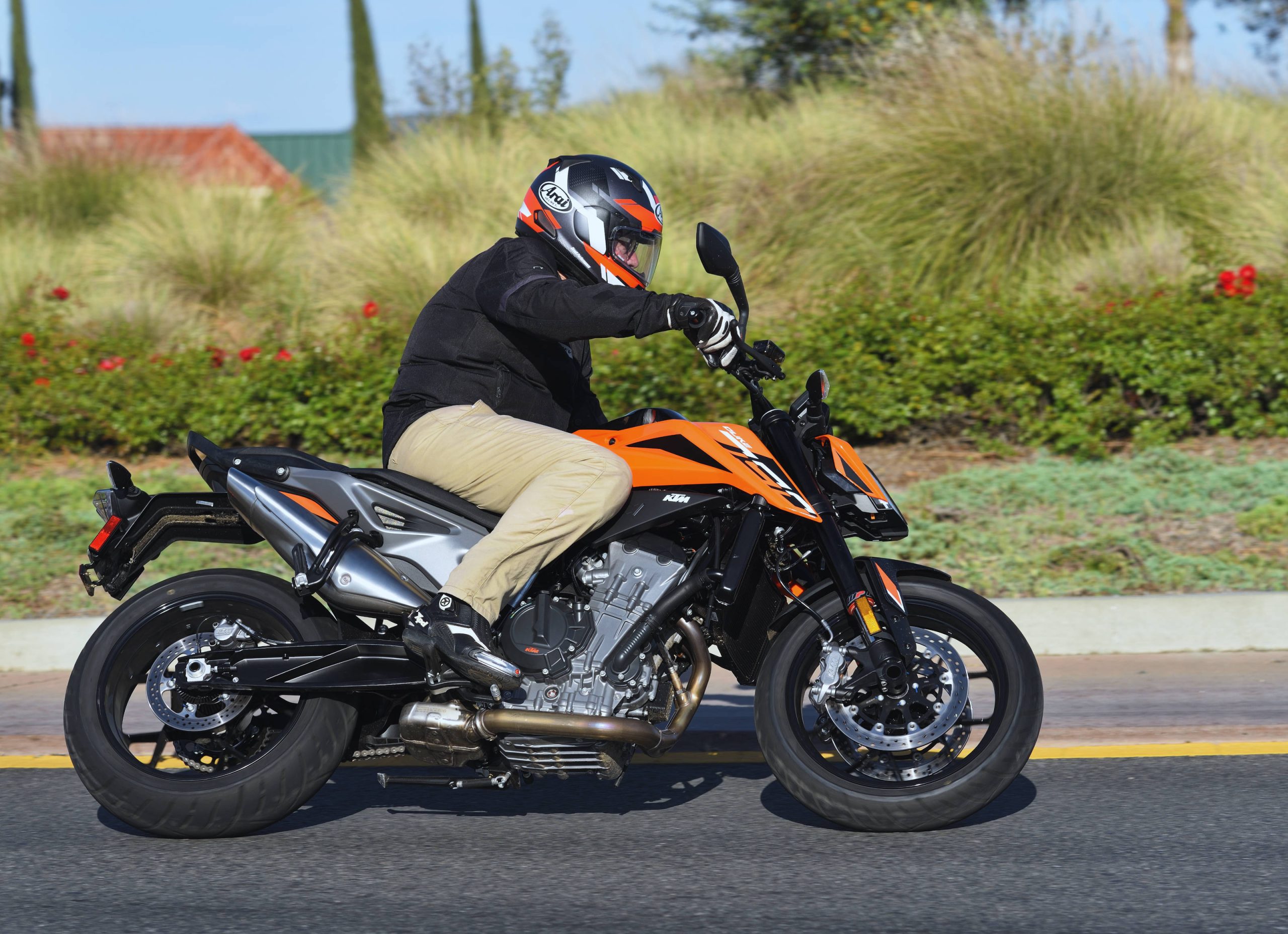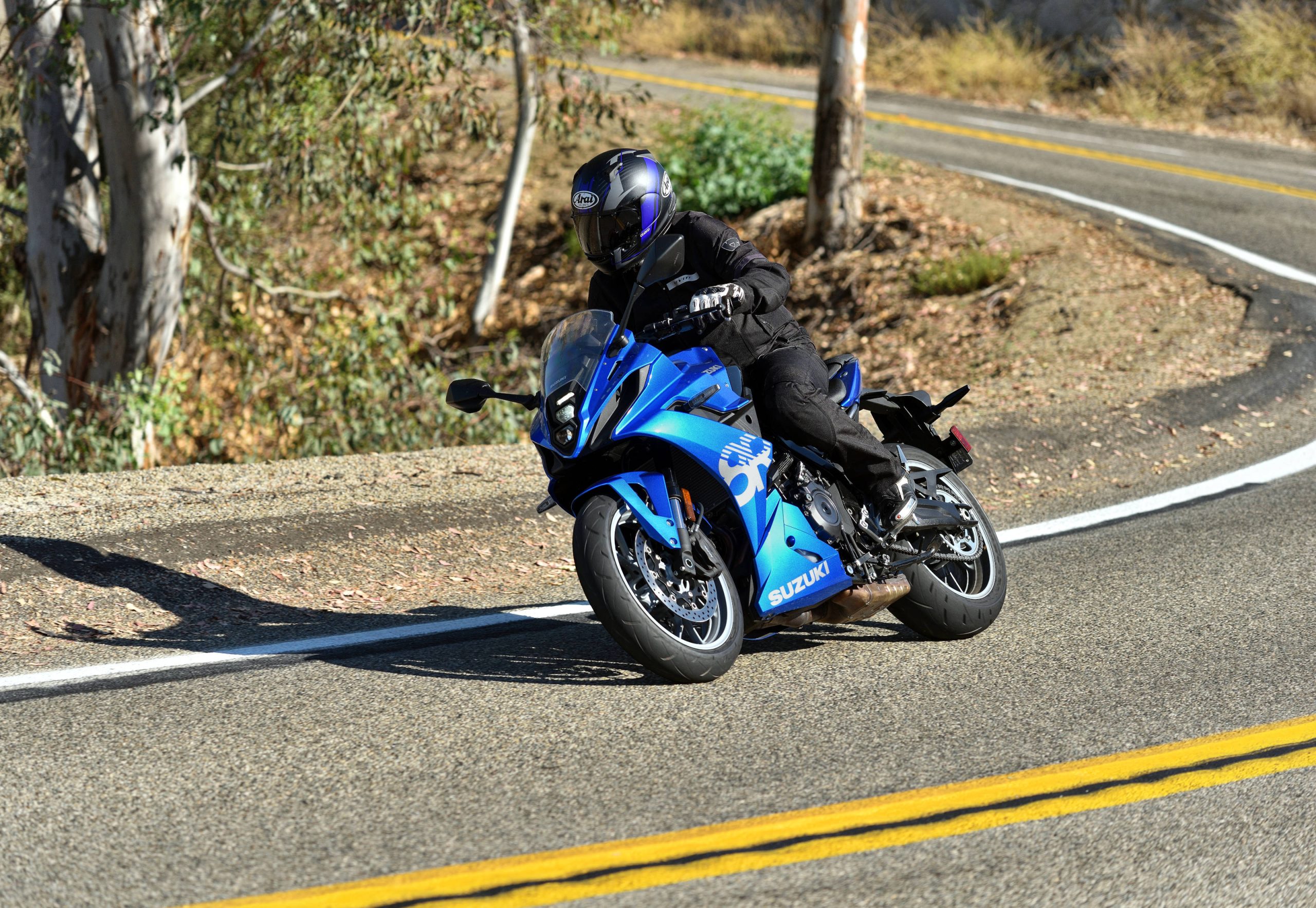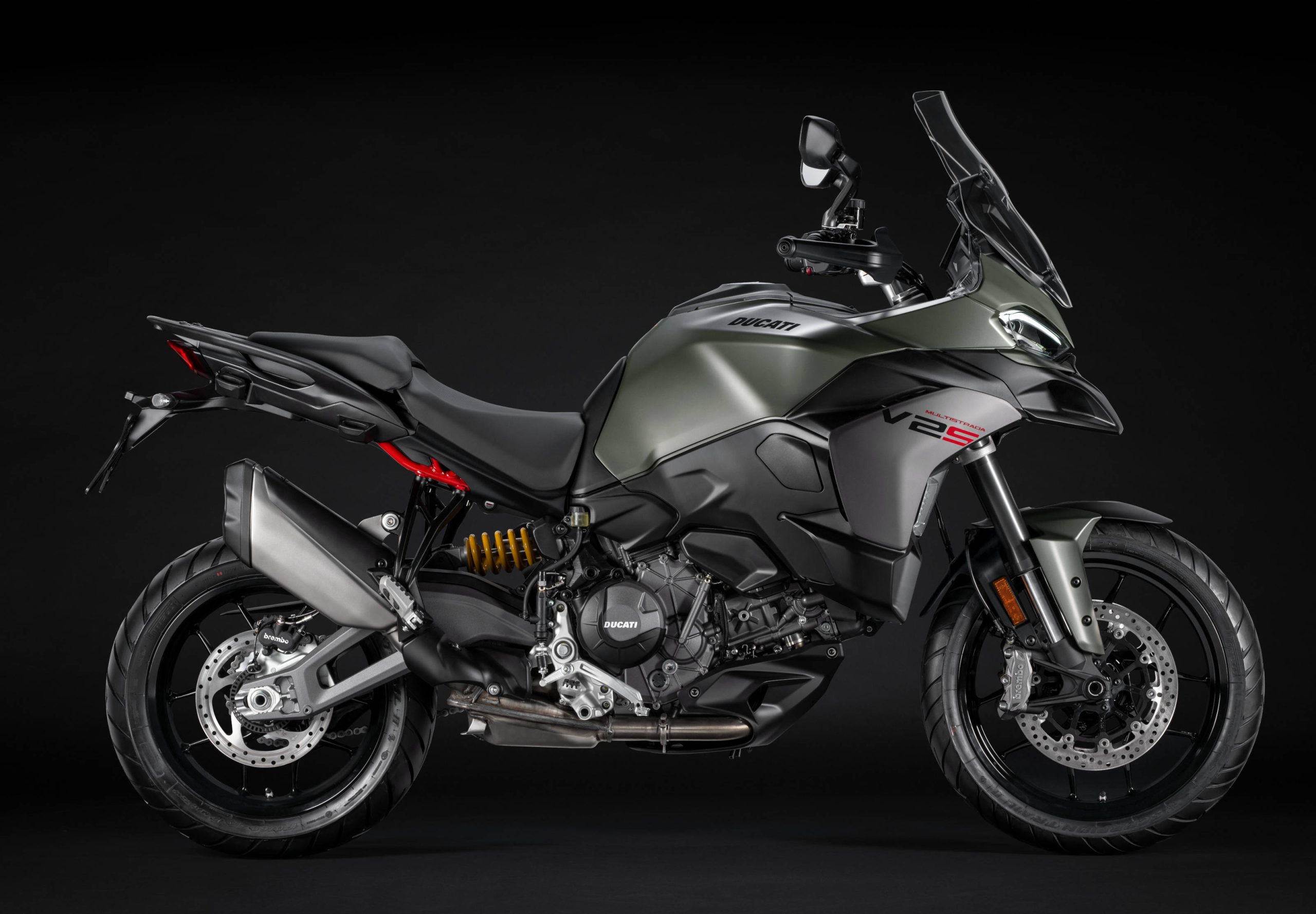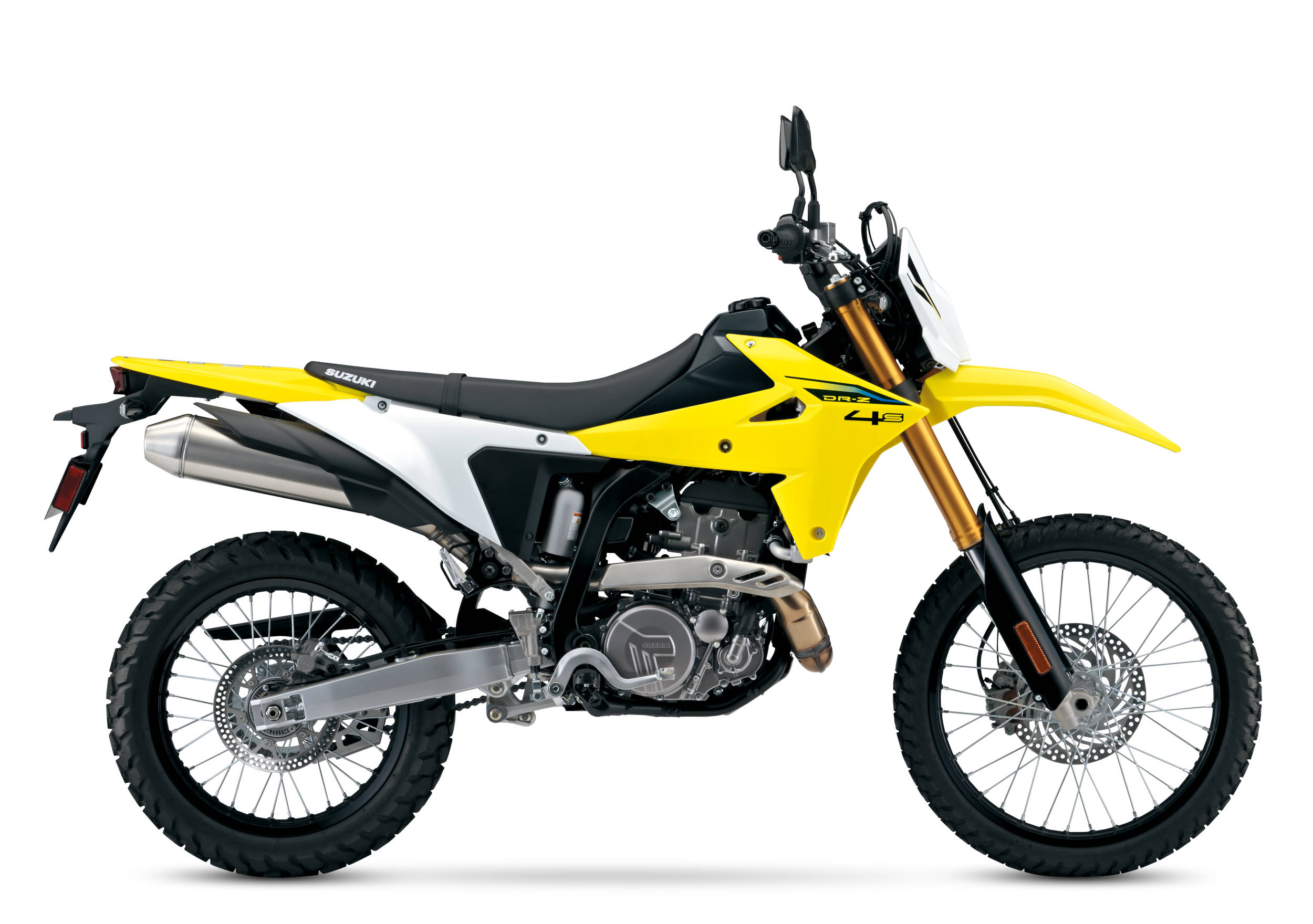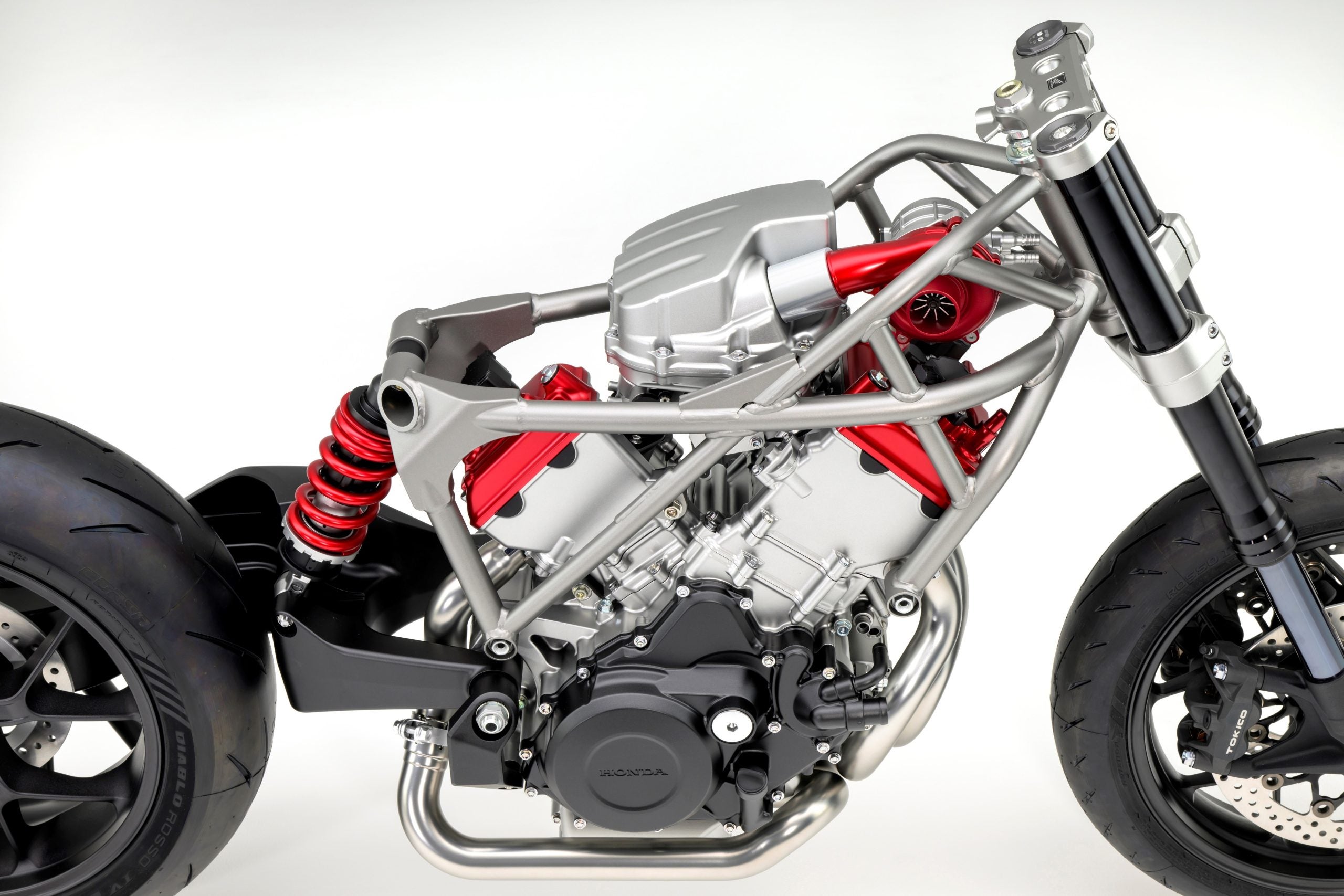Roughly a year ago, a motorcycle industry veteran told me that there were two ways for motorcycle manufacturers to approach this recession. They could either pull back new model introductions to save money, or charge ahead with new models in an effort to gain market share before the industry rebounded. Kawasaki clearly took the later approach. In the last few years, it is hard to think of another manufacturer that has introduced as many new models to the U.S. market as Kawasaki. Some of them have been designed from the ground up, while others have been brought over from other markets. Still others have been substantially redesigned. The Vulcan 1700 cruiser series was all new last year, and a unique 250cc supermoto (the Kawasaki KLX250SF) hit the market in 2009, as well. A virtually new ZX-6R was introduced to the U.S. press at Kawasaki’s Autopolis race track late in 2008, for the 2009 model year.
More relevant to this report, Kawasaki significantly redesigned its 2009 KLX250S dual sport on the heels of introducing its thoroughly updated 2008 KLR650 dual sport. The KLR650 and the KLX250S are currently the number 1 and number 2 selling dual sports in the United States market. These dual sports, together with Kawasaki’s strong emphasis on 650cc twins — led by the Ninja 650R (introduced as a 2006 model and significantly redesigned for 2009)– have really hit a sweet spot with consumers. In slightly different states of tune, the same, lightweight, modern parallel twin is utilized in the Versys and ER-6n models.
On top of all this, Kawasaki has redesigned its motocross bikes virtually every year (as does most of the competition), but also introduced the following additional new and/or substantially redesigned models in the past few years, including the ZX-10R, Ninja 250R (a huge hit), ZX-14, KLX140 and 140L, Concours 14 sport tourer and Z1000 super naked.
So, what has happened to Kawasaki’s market share here in the U.S.? Just a few years ago, Kawasaki had roughly 1/3 of Honda’s market share and 1/2 of Yamaha’s. For the month of March, 2010, Kawasaki had the largest motorcycle market share of any Japanese manufacturer selling in the United States. Remarkable in one sense, but a direct result of investment in new product, most of which has been well received by U.S. consumers.
So what was the purpose of the “Tour d’Idyllwild”? I just attended it, and I am still not sure of the answer to that question. Kawasaki invited a group of journalists to meet at its headquarters in Irvine one morning last week, ride its 650cc twins to the mountain-top community of Idyllwild, where we would sleep for the evening, and then wake up to ride the KLR650 and KLX250S dual sports through the mountain trails surrounding Idyllwild the following day. None of these bikes was brand new to this market, and most of the bikes had been tested by the journalists present. So why did Kawasaki do this? I am not entirely sure, but it may have been simply to celebrate the sales success recorded in March of this year, and to re-acquaint the Southern California moto journalists with some of its most popular models. Whatever the reason, I had a blast and was happy to ride some motorcycles I knew I would enjoy. Additionally, this was the first time I had personally ridden the ER-6n (Gabe tested the bike earlier for MD, here), as well as the redesigned Versys I had first tested back in 2008.
When we left Kawasaki, it was still pretty cold, and I jumped aboard the Ninja 650R. I was looking for some wind protection until the sun came out. As we jumped on the freeway to head towards the high deserts and, eventually, the mountains, I was quickly reminded why I liked the 650R so much . . . light, nimble and comfortable. It tracked effortlessly at the 75 mph pace we set south on Interstate 5. It also dealt with the twists and turns of Ortega Highway as we worked our way toward Murrieta and our first photo stop.
I then jumped aboard the one bike I had never ridden (I had ridden an earlier version of the Versys back when it was introduced to the United States in 2008), the ER-6n naked. When Gabe tested the bike, he talked about how tiny it was and how low the seat was. He wasn’t kidding! The lack of a fairing up front, and any significant windshield made the bike seem even smaller.
With a little bit less weight up top, and an even lower center of gravity, the ER-6n is purpose built for cutting-and-thrusting through city traffic and tight roads. At higher speeds, the mini-fairing provides some wind relief to the chest area, but I was longing for a bit more leg room . . . I wanted to get on the bike I hadn’t ridden in a couple of years, the redesigned Versys.
After our lunch stop in Rainbow, CA, I grabbed a Versys for the ride up into the high desert before Idyllwild. This bike is extremely popular for good reason, and I fell in love with it all over again.
The Versys has a bolt upright riding position — sort of like a supermoto or a dirt bike. With the redesigned headlight and fairing, it has plenty of wind protection to keep the rider comfortable at higher speeds. The tall seat (Kawasaki offers an optional shorter seat, for shorter riders) will leave some riders on tip-toes at stops, but it creates a comfortable distance between the seat and pegs. The wide and high bars leave your hands, wrists and elbows completely relaxed.
But these things are not what make the Versys special. It is the handling. The slightly longer suspension travel makes the Versys feel far more plush than its siblings, without being wallowy. More importantly, it sticks like glue in corners. You get so confident, so quickly on the Versys that you soon find yourself using those wide bars to throw the bike from side-to-side through the twisties. This is not only great fun, it allows you to carry a pace that would humble most sportbike riders.
But the Versys is really about “versatility”, isn’t it? That’s the magic of this machine. Touring, commuting, play riding — you name it — this bike is the perfect companion for almost all occasions. The closest competitor out there to the Versys is Suzuki’s “Wee Strom”, the smaller displacement (650cc) version of the V-Strom. That is a great bike, as well, but the Versys can run circles around it in the handling department, and it has better brakes.
After a restful evening in a mountain cabin, we awoke to a cold, gray, rainy morning in Idyllwild. The dual sports were parked and ready for us to tackle some tricky, slippery off-road conditions. I chose to ride the big KLR650, but you can read my very favorable impression of its little brother, the KLX250S here.
We tested the current version of the KLR650 when it was introduced for the 2008 model year here. The KLR is another unique Kawasaki product that has a “cult” following. Come to think of it, this is a pretty big cult, because the KLR650 is the best selling dual sport motorcycle in the United States. In our opinion, there is good reason for this. If you want to know all the details, study our earlier report.
For this report, I will focus on the Idyllwild ride. We started out on pavement and I quickly realized I had a problem with my vision. I had the opportunity to wear either a street bike helmet or a dirt bike helmet (with goggles). I struggled with this decision right up until the last minute, but ultimately decided to go with the dirt bike helmet and goggles. Big mistake.
The glasses I was wearing had never been worn under goggles before. Although I tried the combination in my room before getting on the KLR, things didn’t work out quite as I expected. Basically, the goggles pushed my glasses up once my helmet was on, and I was staring into the lower rim of the frame of my glasses, rather than through the lenses. I compensated by tilting my head down for the first 10 miles, or so (including the first dirt section), but quickly got sick of this compromise, particularly since I had the added problem of looking through foggy, rain-streaked goggles on top of my glasses. Solution? Take the goggles off and leave them dangling around my neck, and ride with my glasses positioned squarely where they should be. Normally, this would create a problem with dust on the trail, but we had a light sprinkling of rain that kept the dust down and it worked perfectly. Relief!
Now that I could see, I started to concentrate on my riding. The KLR is very easy to ride on the street. On the dirt, it requires patience and anticipation. It is a big bike, and it cannot be tossed around like a motocrosser or an enduro. Nevertheless, once you learn how to ride the KLR off-road, it can go just about anywhere.
Although most of our trails were pretty wide, they were full of rain ruts and, at points, deep sand. After using the front brake too aggressively entering corners (and losing traction on the front end several times), I realized that I needed to attack corners by releasing the front brake before turning the KLR, and then using the rear brake to further slow the bike and initiate the turn. I could finish the turn with the throttle. Using this technique, we were able to keep a pretty good pace . . . a pace that might surprise someone on a more dedicated dirt machine.
Trying to hang on to the back of Kawasaki’s Jeff Herzog, I developed a pretty good rythm and really had a blast off road on the KLR. We finished the day by hitting some pavement, and then I returned to the hotel.
If Kawasaki’s purpose for the Tour d’Idyllwild was to remind the press just how fun some of their relatively inexpensive models are, the 650cc parallel twin family and their popular dual sports, they certainly succeeded. They also reminded me how diverse Kawasaki’s line-up has become, and how often they have hit the mark with their new product in the last few years. If you want more details on Kawasaki’s line-up, just follow the “Motorcycles” link on their home page.
MD Readers Respond:
- I think Kawasaki was VERY smart to build a very competent range of 650’s in either updated versions (the new dual sports) and the Ninja/ER/Versys trio: Fabulous bikes at price points that are now WAY more important than they were a year ago, plus what’s their competition? I can’t think of many for the street bikes, and the KLR’s are the class leaders. And these are perfect for those of us who want smaller bikes that are still full-featured. Now if they’d just update the little Nija 500 like the terrific job they did on the 250 . . . .You could own a KLR650 and an Ninja 650 for the price of most monster cruisers or personal cuise missle superbikes, and save money, gas, and insurance, and have cash left over. Brilliant! Joey

